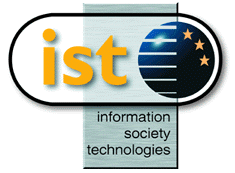 |
END OF PROJECT REPORT SaFES - IST - 1999 - 20842 Safe Food Enhancement System |
 |
|
EXECUTIVE SUMMARY
|
|
The methodologies used during the trial are described and the effects of SaFES on a food producerís, resellerís, consultantís and auditorís business, as seen by these user groups, is given. In addition the different requirements of diverse users such as non-primary food producers and supermarket chains are compared to the SaFES functions. Savings in the cost of HACCP, in both planning and day to day running phases, have been shown to be achievable. Conclusions gleaned from the trial are presented regarding psychological acceptance by users of such tools, effects on legislation and attitudes of regulatory bodies. |
|
TABLE OF CONTENTS
|
||
| 1. | INTRODUCTION | |
| 2. | PROJECT OVERVIEW | |
|
2.1 |
Consortium Composition |
|
|
2.2 |
Main Achievements of the Project |
|
| 3. | PROJECT OBJECTIVES | |
|
3.1 |
Implementation of the System |
|
|
3.2 |
Assessment against Relevant Standards |
|
|
3.2.1 |
Accepted Industry Requirements of a HACCP Tool |
|
|
3.2.2 |
Relevant Standards for e-Commerce Tools |
|
|
3.3 |
The Impact of SaFES on the Food Supply Chain |
|
|
3.4 |
Dissemination of Results |
|
| 4. | METHODOLOGIES | |
|
4.1 |
The Trialís Foundations |
|
|
4.2 |
Software Development |
|
|
4.3 |
e-Working Methods within the Consortium |
|
| 5. | PROJECT RESULTS AND ACHIEVEMENTS | |
|
5.1 |
Meeting the Objectives |
|
|
5.2 |
Measurement of the Impact of SaFES |
|
|
5.2.1 |
Improving Working Practices Across the Supply Chain |
|
|
5.2.2 |
Impact on Producer |
|
|
5.2.2.1 |
Reducing HACCP Design Costs |
|
|
5.2.2.2 |
Derivation of a Distributed Team-Based HACCP |
|
|
5.2.2.3 |
Cost Effective Data Collection |
|
|
5.2.2.4 |
Running Costs |
|
|
5.2.2.5 |
Training Costs |
|
|
5.2.3 |
Impact on Resellers |
|
|
5.2.4 |
Impact on Consultants |
|
|
5.2.5 |
Impact on Auditors |
|
|
5.3 |
Relations and Synergies with other Relevant Projects |
|
|
5.4 |
Implications on EU Policies and Standards |
|
|
5.5 |
Benefits to Society |
|
|
5.5.1 |
Enhancing Europeís Competitive Edge in the Global Marketplace |
|
|
5.5.2 |
Providing Support to Future Growth in European Industry |
|
|
5.5.3 |
Affecting Levels of Employment within the European Union |
|
|
5.5.4 |
Improving the Quality of Life for People Affected |
|
|
5.5.5 |
Protecting and Preserving of the Natural Environment and Resources |
|
| 6. | DELIVERABLES | |
| 7. | REFERENCES | |
| 8. | PROJECT MANAGEMENT AND CO-ORDINATION ASPECTS | |
| 9. | OUTLOOK | |
|
9.1 |
Partner 1 - van Helsing Limited |
|
|
9.2 |
Partner 2 - EQMC Limited |
|
|
9.3 |
Partner 3 - Scanfo Aps |
|
|
9.4 |
Partner 4 - Padborg Fjerkraeslagteri A/S |
|
|
9.5 |
Partner 5 - Emborg Foods A/S |
|
| 10. | CONCLUSIONS | |
 |
|||
|
The
SaFES Project is partially financed by the EU's
|
|||
|
|
|||